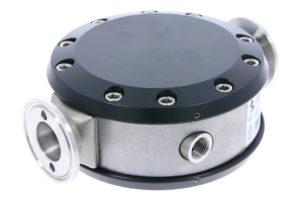How to Measure Paint Thickness
Whether it is the glossy finish on a car or the protective coating on a bridge, ensuring the correct paint thickness is essential for longevity and performance. This article examines the different technologies used to measure paint thickness and provides a step-by-step guide to using a paint thickness gauge, as well as an overview of the leading manufacturers in the industry.
Contents
Technologies for Measuring Paint Thickness
There are several technologies available for coating thickness measurement. The choice of method depends on the type of substrate and the level of accuracy required. Here are some common technologies:
Magnetic Induction
Magnetic induction paint thickness gauges use a magnetic field to measure the distance between the instrument’s probe and the substrate. This method is suitable for ferrous metals and is commonly used in the automotive industry.
Eddy Current
Eddy current coating thickness gauges are ideal for non-ferrous metals such as aluminum. They work by inducing an electromagnetic field that interacts with the metal’s conductivity to provide accurate measurements.
Ultrasonic
Ultrasonic coating thickness gauges send high-frequency sound waves into the material and measure the time it takes for the waves to bounce back. This technology is versatile and can be used on a variety of substrates, including metals, plastics, and composites.
X-ray Fluorescence (XRF)
XRF coating thickness gauges use X-rays to determine the thickness of a coating. This non-destructive technique is suitable for a wide range of materials and provides highly accurate measurements.
Micrometer-Based Methods
Traditional micrometers and calipers can be used to manually measure coating thickness, but they are less accurate and often not suitable for coatings on curved or irregular surfaces.
Measure Paint Thickness
Step 1: Select the Appropriate Gauge
Select a gauge that is compatible with the type of substrate you are measuring. Make sure it has the necessary technology (e.g., magnetic induction, eddy current, ultrasonic) for accurate measurements.
Step 2: Prepare the Surface
Thoroughly clean the surface to remove any dirt, rust, or debris that could affect the measurement. Make sure the area is dry and free of contaminants.
Step 3: Calibrate the Gauge
Follow the manufacturer’s instructions to calibrate the meter. Calibration is essential to ensure accurate readings. Some meters require periodic recalibration, so be sure to check and adjust as needed.
Step 4: Take the Measurements
Place the gauge probe firmly against the surface and follow the manufacturer’s guidelines for taking readings. Typically, you should take several readings in different locations to ensure consistency.
Step 5: Record and Analyze Data
Record the measurements and analyze the data. Compare the results to the coating thickness specifications or standards relevant to your application.
Paint Thickness Gauge Suppliers
Several manufacturers produce reliable coating thickness gauges for various applications. Here are some of the leading ones:
- DeFelsko: Known for their PosiTector series of gauges
- Fischer Technology: Offers a range of coating thickness measurement instruments, including magnetic induction and eddy current gauges.
- Elcometer: Offers a range of paint thickness gauges, including digital and ultrasonic models, suitable for a variety of substrates.
- Hitachi High-Tech Analytical Science: Offers XRF-based paint thickness measurement instruments known for their accuracy.
- PCE Instruments: Offers a wide selection of coating thickness gauges, including models for both ferrous and non-ferrous substrates.
- Olympus Corporation: Offers ultrasonic thickness gauges suitable for a range of applications, including paint thickness measurement.

